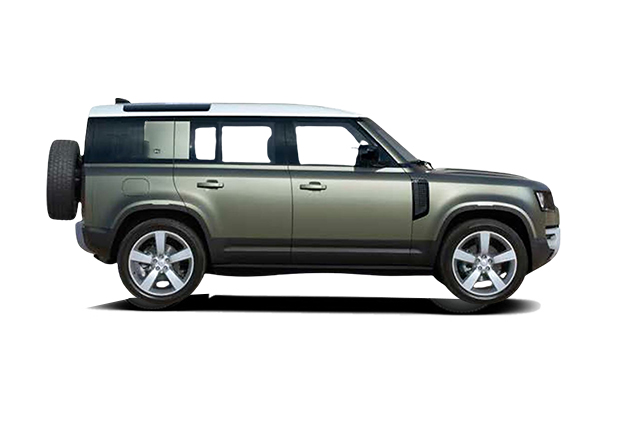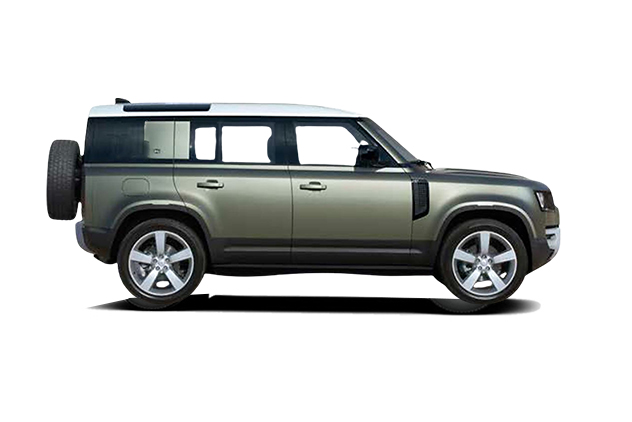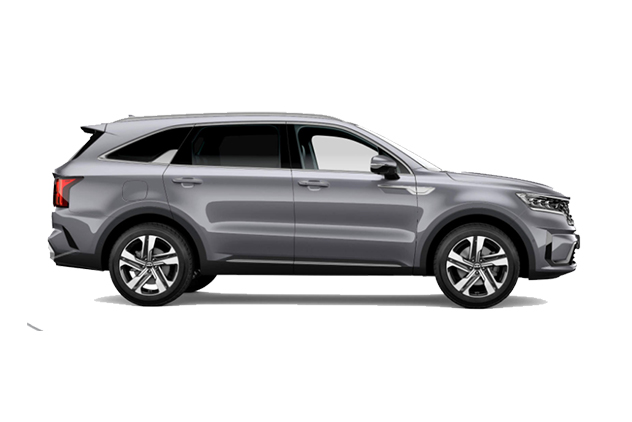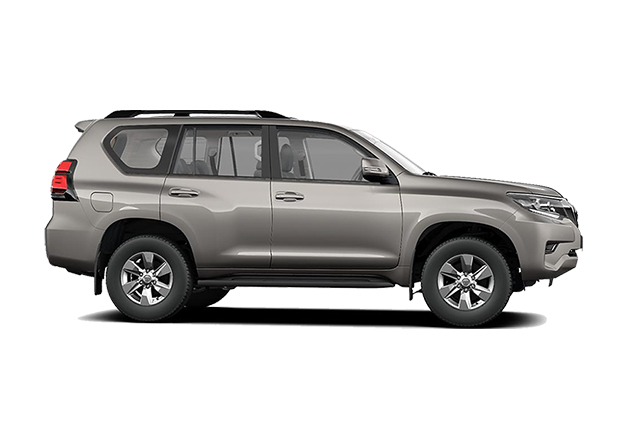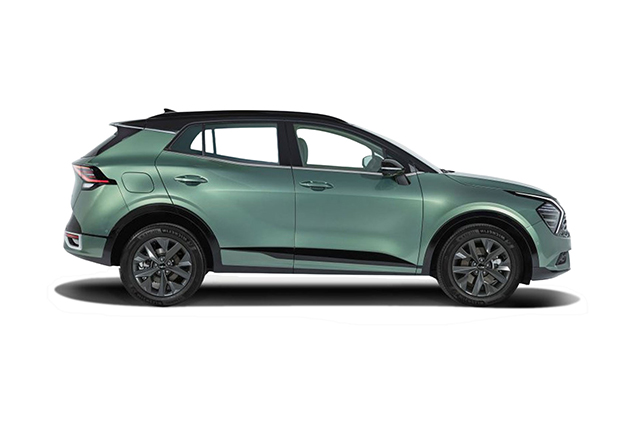From vibrant rhyolite mountains to Europe’s most powerful waterfall, Iceland’s diverse landscapes attract adventurers year-round. In this article, we break down the top 13 Iceland attractions, each offering its own unique blend of geological marvels, cultural experiences, and natural beauty.
We explore what makes each attraction special, along with details on accessibility and how to get there to help you plan your adventure. Whether you seek geothermal wonders, cascading waterfalls, or charming coastal towns, Iceland has something to offer everyone.
Regardless of if you are Icelandic history lover or nature lovers, you will find some travel inspiration in this blog.
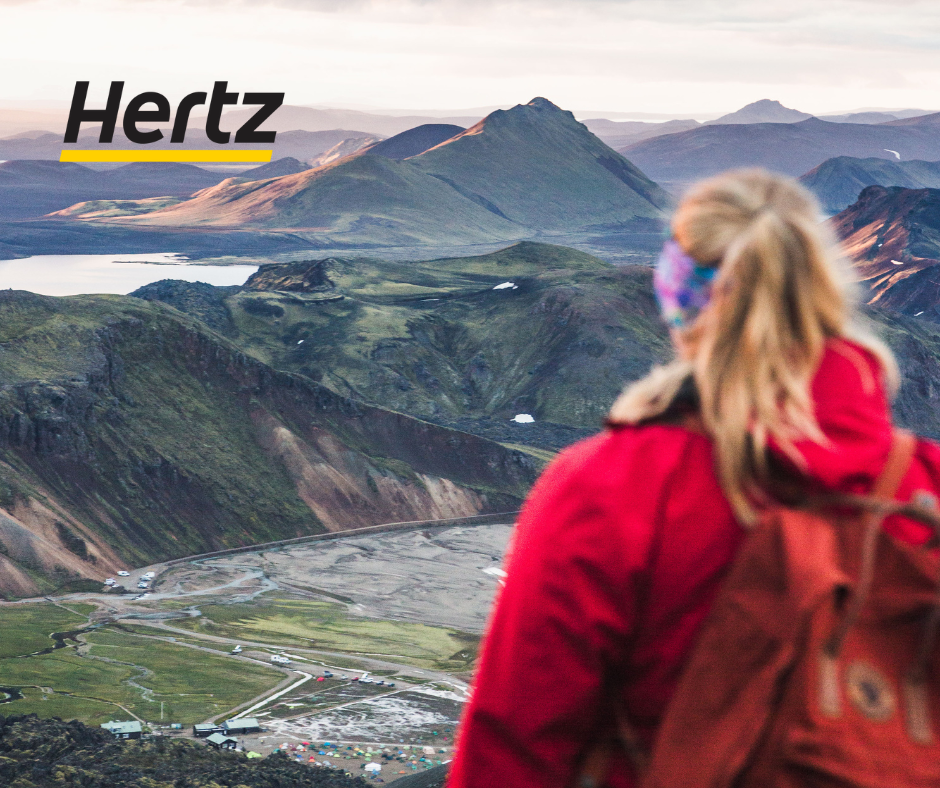
Top 13: Landmannalagur – Highland Area
Landmannalaugar, nestled in Iceland’s southern highlands, is a hub of geothermal activity with vibrant rhyolite mountains and hot springs. Accessible only in summer (late June to September), reaching it requires a 4WD vehicle or guided tour due to rugged terrain and seasonal obstacles, including river crossings. The area’s most remarkable feature is its kaleidoscopic rhyolite mountains, formed from volcanic activity, showcasing hues of red, pink, green, blue, and yellow, crafting a surreal panorama unparalleled elsewhere.
Additionally, natural baths dubbed “People’s Pools,” provide relaxation amidst the wilderness. Landmannalaugar is a hiking haven, boasting an array of trails, including the renowned Laugavegur Trek, spanning 55 kilometers and traversing some of Iceland’s most breathtaking scenery.
For those eager to explore on foot, the area presents a wealth of hiking opportunities ranging from short walks to extensive multi-day treks. Each path offers unique vistas and the chance to witness firsthand the geological forces that shaped this extraordinary landscape.
If you plan to tackle the famous Laugavegur Trek, consider timing your visit with the best weather conditions. This trek is renowned not only for its beauty but also for its challenge, taking adventurers through some of the most dynamic and diverse landscapes Iceland has to offer—from mountain passes and glacial streams to lush valleys teeming with native flora.
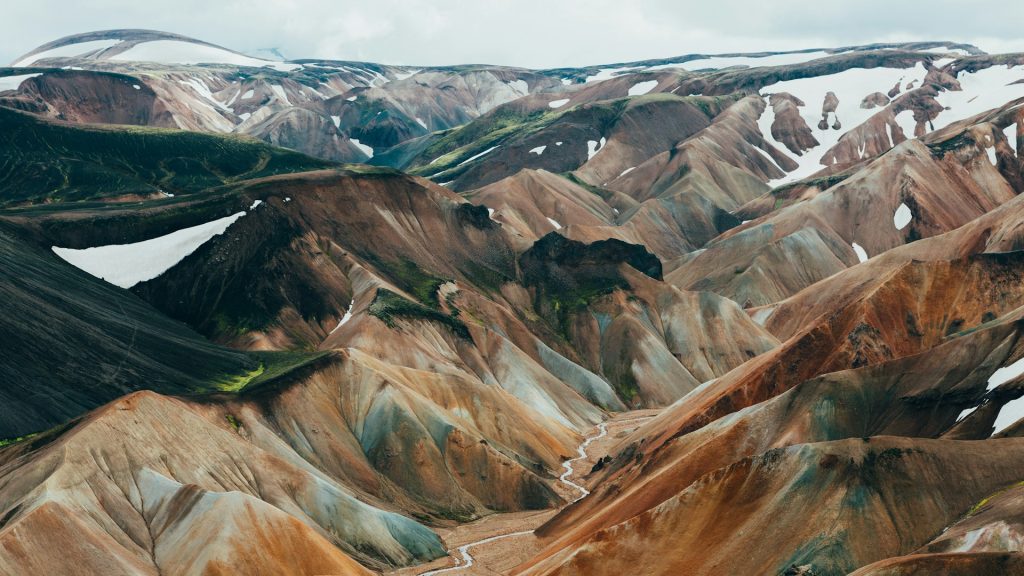
Top 12: Thorsmork – Highland Area
Thorsmork, also known as Þórsmörk, is a stunning mountain ridge located in the southern Icelandic highlands, located between the glaciers Tindfjallajökull and Eyjafjallajökull. At just over 150 kilometers (93 miles) from Reykjavik and 100 kilometers (62 miles) from Selfoss, Thorsmork is a great option for those seeking an escape into wild Icelandic nature, without venturing too far from the capital.
Thorsmork is only accessible during the summer months, typically from late June to September. For the rest of the year, the area will be inaccessible due to heavy snow and harsh weather conditions, making the accessibility 10/10. Due to the rough and remote location, Thorsmork is best accessed by a four-wheel-drive vehicle with high clearance.
The primary access road, F249, requires crossing several rivers, some of which can have strong currents. If you are not comfortable navigating these conditions, you can also join a guided tour.
Thorsmork is a hiker’s paradise, offering a variety of trails with breathtaking scenery sculpted by glaciers and volcanoes, featuring towering mountains, lush valleys, and cascading waterfalls. In fact, hiking is the primary way to explore the region, but there are trail options for all abilities. Limited accommodation options require advance booking, especially in peak season.
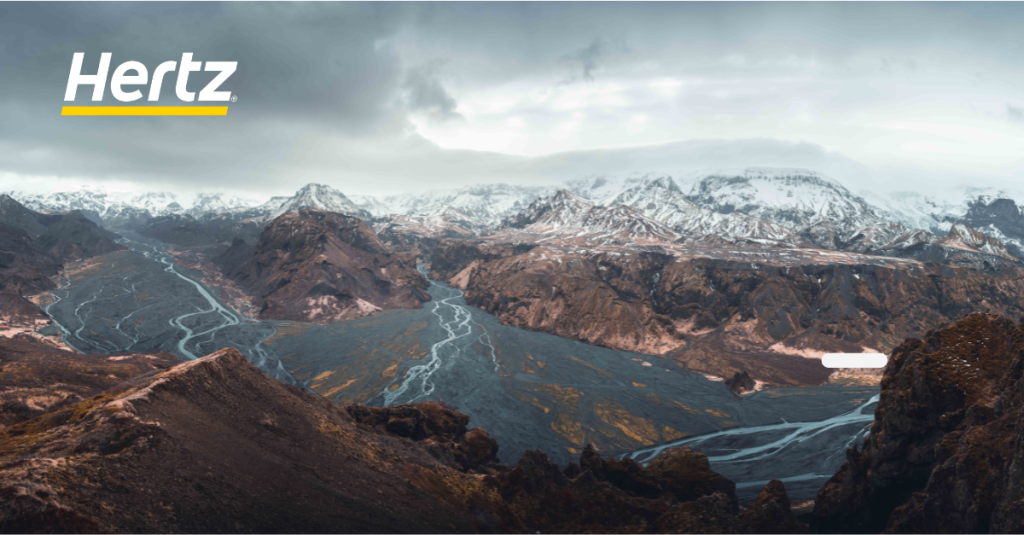
Top 11: Deffifoss – Waterfall in the North
Dettifoss is an Iceland waterfall located in Vatnajökull National Park, and the most powerful waterfall in europe in the remote northern wilderness of Iceland, nearly a 7-hour drive from Reykjavik.
It sits on the Jökulsá á Fjöllum River, which originates from the Vatnajökull glacier. Summer and autumn are the best times to visit Dettifoss as the roads leading to the viewing areas are unpaved, so a four-wheel-drive vehicle with high clearance is highly recommended.
Alternatively, you can join a guided tour that handles the transportation and logistics. We have given this area an accessibility difficulty of 8 out of 10 since it’s quite far from the capital, and Reaching Dettifoss requires some planning and a sense of adventure.
Dettifoss is Europe’s most powerful waterfall, plunging an average of 193 cubic meters of water per second over a 44-meter (144-foot) drop into a vast canyon. It is surrounded by a stark and dramatic landscape of volcanic and the Jökulsárgljúfur canyon, carved by glacial runoff. Dettifoss is a popular stop on the Iceland Diamond Circle, a scenic route in North Iceland that also includes Lake Mývatn, Góðafoss waterfall, and the Ásbyrgi canyon.
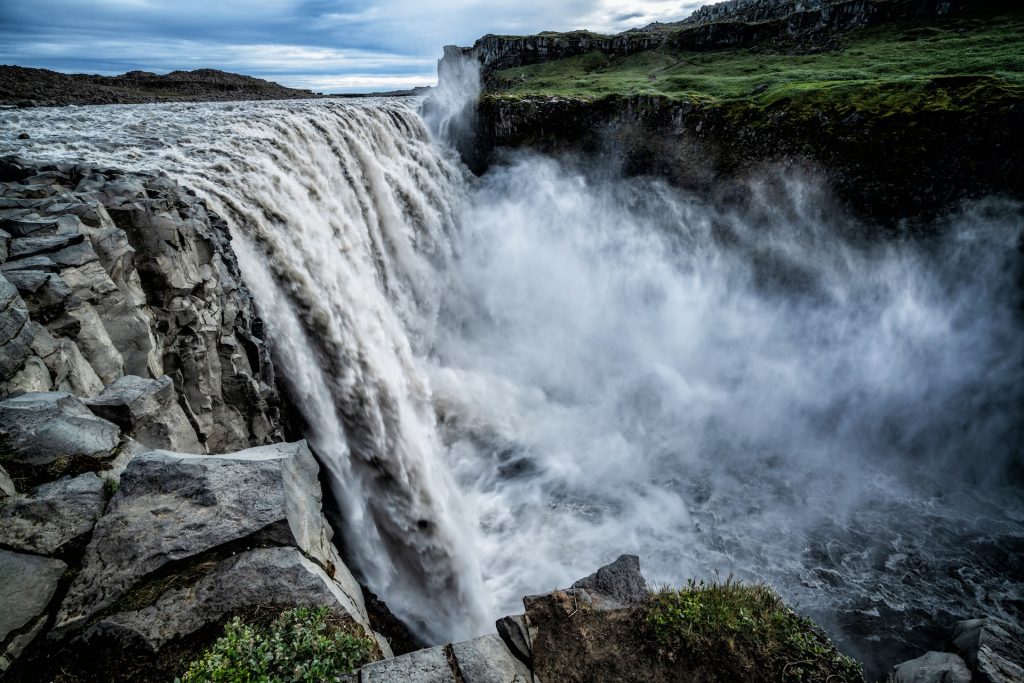
Top 10: Husavik – Town in the North Iceland
Húsavík is a port town located in the north of Iceland on the shores of Skjálfandi Bay. Husavik is renowned for its whale-watching opportunities, and the area is celebrated as one of the best places in the world to observe whales in their natural habitat. For that reason, the best time to visit is mainly during the summer and early autumn, as it’s the prime time to see the abundant marine life. Additionally, Husavik offers charming coastal scenery, opportunities for birdwatching, and a glimpse into Icelandic fishing culture.
Húsavík is easily accessible by car, and a two-wheel drive vehicle is sufficient during the summer months on the paved roads. The town is located roughly 600 kilometers from Reykjavík along Route 1 Ring Road, which encircles Iceland. The accessibility difficulty is 7 out of 10, only because of its distance from Reykjavik, making it harder to access during winter. However, domestic Iceland flights are also available from Reykjavík to Húsavík Airport.
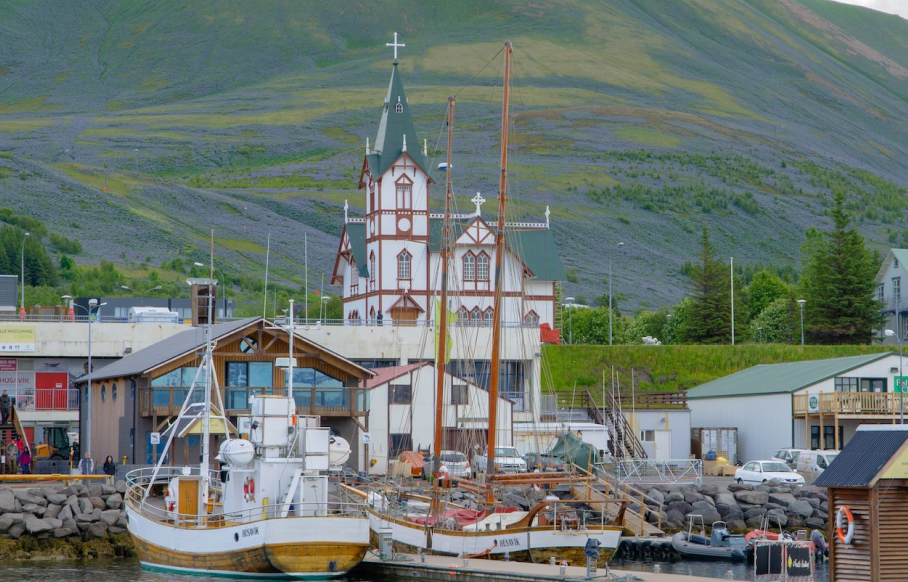
Top 9: Seydisfjordur – Town in the East Iceland
Seydisfjordur is a town nestled in East Iceland, situated along a picturesque fjord surrounded by mountains. The best time to visit is mainly during the summer and autumn months. Accessing Seydisfjordur is possible by driving a 2WD or 4WD full-size car. However, accessibility difficulty is rated 7 out of 10 due to challenging access during winter and the fact that it is roughly 668 kilometers from Reykjavík along the Ring Road.
Seydisfjordur is worth visiting for its stunning natural beauty and vibrant artistic community. The town boasts colorful wooden houses, many waterfalls, and hiking trails with breathtaking views of the surrounding landscape. Additionally, Seydisfjordur hosts cultural events, art galleries, and a renowned art festival, LungA, making it a hub for creativity and exploration in East Iceland.
As you approach Seydisfjordur, the journey itself becomes a part of the adventure. The drive through the winding roads offers panoramic views of the fjord, enhanced by the ethereal beauty of the misty mountains that frame the town. Upon arrival, the charm of Seydisfjordur is immediately evident in its vibrant, colorfully painted wooden houses that seem to pop against the lush greenery of the landscape.
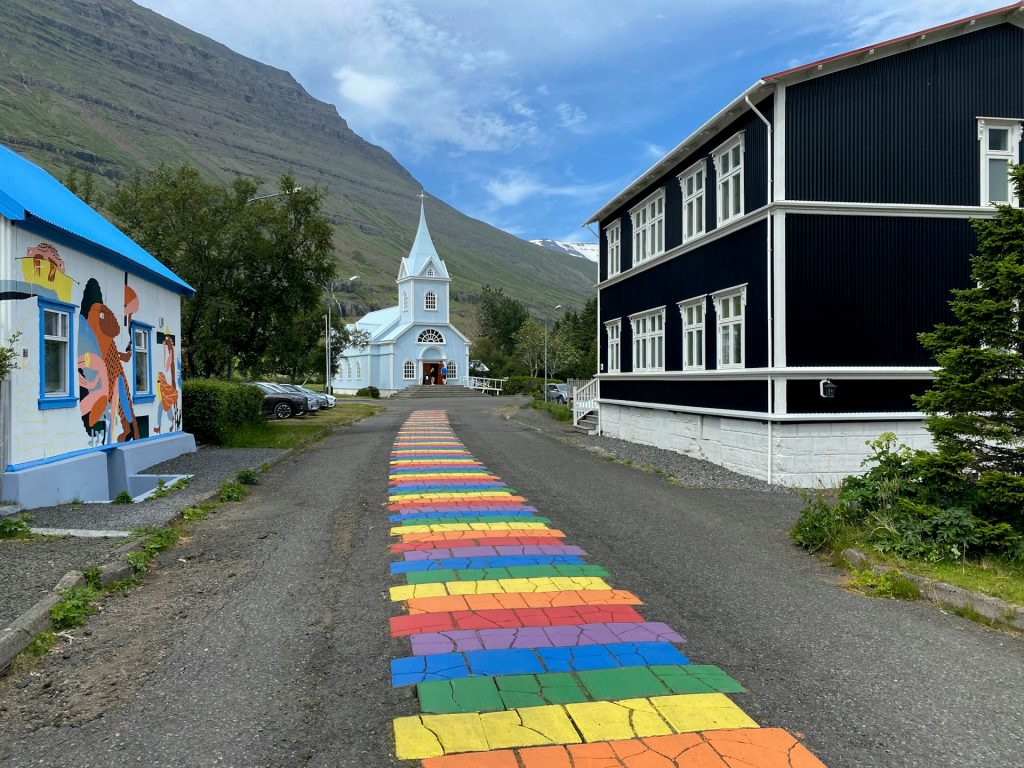
Walking through the town, visitors can feel the pulse of its thriving artistic community. The air is often filled with the sounds of local musicians, and the streets come alive with the work of artists displayed in various galleries. Seydisfjordur is not just a feast for the eyes but also a catalyst for creative inspiration. The town’s dedication to the arts is most prominently showcased during the LungA Art Festival. This event draws artists and art lovers from around the world, offering workshops, exhibitions, and live performances that transform the town into a vibrant cultural hub.
For nature lovers, Seydisfjordur is a gateway to some of Iceland’s most untouched landscapes. The numerous hiking trails accessible from the town lead adventurers to secluded waterfalls and breathtaking overlooks. These trails vary in difficulty, catering to both the casual walker and the seasoned hiker looking for a challenge.
Visiting Seydisfjordur also offers a unique opportunity to engage with local history and heritage. The town’s heritage center provides insights into the rich cultural tapestry of the area, while historical landmarks and preserved buildings tell stories of its past. Whether you are exploring the great outdoors, soaking in the artistic atmosphere, or delving into the historical roots of the town, Seydisfjordur offers a deeply enriching experience that connects you with both nature and culture.
For those planning to visit, it’s advisable to check road conditions and weather forecasts in advance, especially outside of the summer months, as the roads can become quite challenging. But once there, Seydisfjordur’s enchanting beauty and warm community are sure to make the journey worthwhile, leaving visitors with lasting memories of their time spent in this unique corner of Iceland.
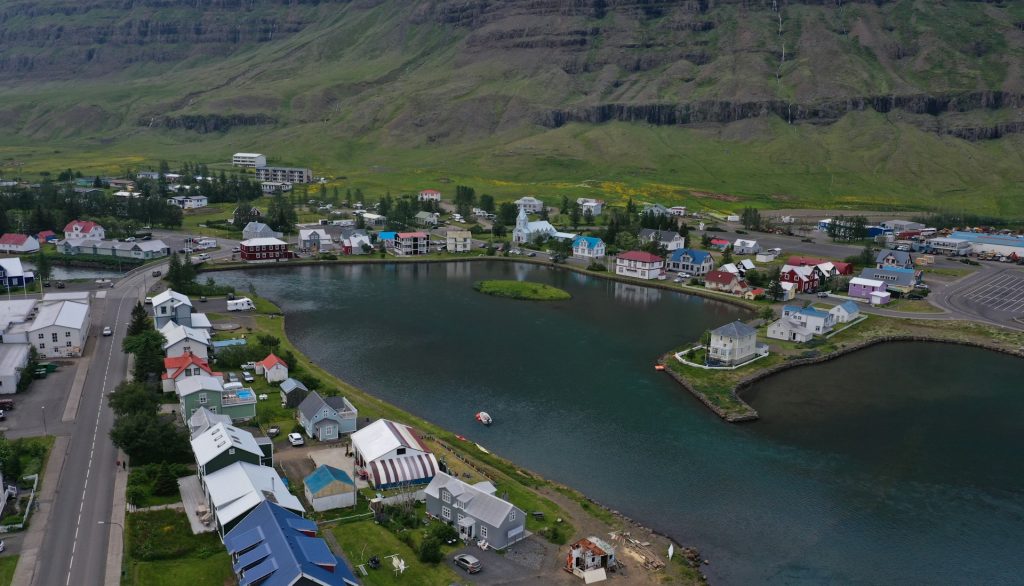
Top 8: Latrabjarg Cliffs – Westfjords Area
Látrabjarg Cliffs are situated in the Westfjords area of Iceland, jutting out into the North Atlantic Ocean. Generally, summer (June to August) offers the most pleasant weather conditions for exploring Látrabjarg. You can expect milder temperatures and longer daylight hours to enjoy the cliffs and the surrounding area. For the best puffin spotting, plan your trip between May and August.
This is when millions of Atlantic puffins arrive at Látrabjarg to breed and raise their young. Other bird species, like razorbills, guillemots, and gannets, can also be seen throughout the summer months. The cliffs themselves offer dramatic and panoramic views of the Atlantic Ocean. On a clear day, you can see all the way to Greenland!
The only way to access the cliffs is by car, and a four-wheel drive vehicle with high clearance is strongly recommended. The road to Látrabjarg (road 612) is a rough gravel road, which is also an Iceland F-road and can be challenging to navigate. Látrabjarg is also a far journey from Reykjavík, the capital of Iceland. The drive takes approximately 7-8 hours, depending on road conditions and stops, making the accessibility difficulty an 8.5.
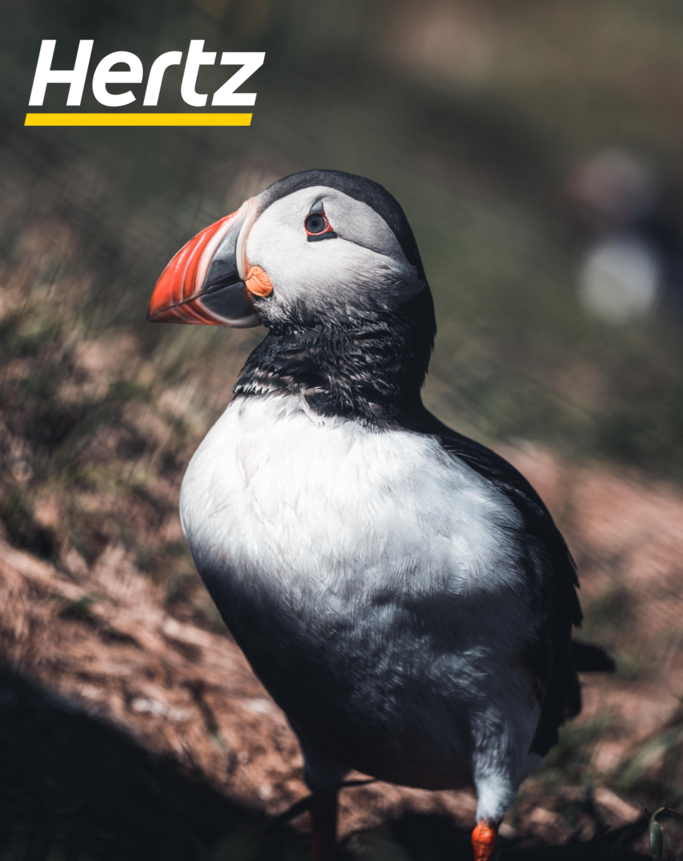
Top 7:Kirkjufell Mountain – Snæfellsnes Peninsula
Kirkjufell, also known as “Church Mountain” due to its resemblance to a church steeple, is located on the Snæfellsnes Peninsula in western Iceland. It stands tall near the small fishing town of Grundarfjörður, a popular destination on the peninsula. The beauty of Kirkjufell can be appreciated year-round, making it a versatile stop on your Icelandic itinerary. Summer provides long daylight hours and green landscapes, while winter allows you to experience the snow-capped Kirkufell and possibly see the northern lights (aurora borealis).
The accessibility difficulty is rated 6 out of 10, mainly due to the distance from the capital. Kirkjufell Mountain is worth visiting for its iconic pyramid shape and stunning natural beauty. It is often referred to as “the most photographed mountain in Iceland” and has been featured in various films and television shows.
Most notably, Kirkjufell gained international fame as a key location in HBO’s hit series “Game of Thrones,” where it was featured as the “mountain like an arrowhead” in the show. This recognition has further cemented its status as one of Iceland’s must-visit landmarks, drawing fans of the series from around the globe eager to see the mystical mountain for themselves.
The surrounding area offers opportunities for hiking, photography, and enjoying the scenic landscapes of the Snæfellsnes Peninsula.
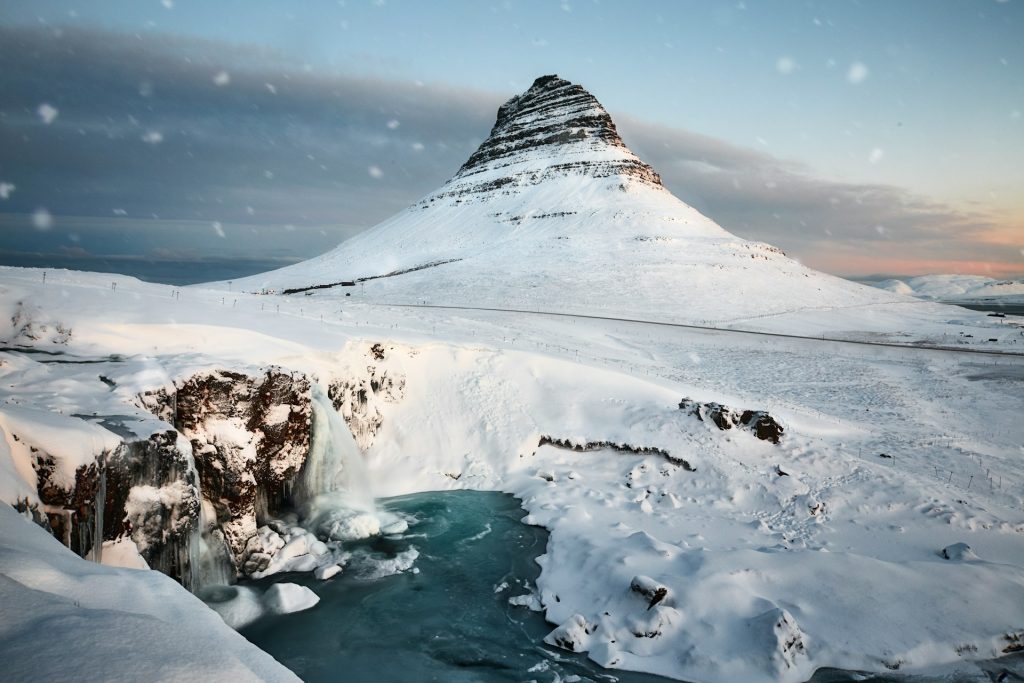
Top 6: Jokulsarlon Glacier Lagoon + Diamond Beach – South Coast
Jökulsárlón Glacier Lagoon and Diamond Beach are located on Iceland’s southern coast, near Vatnajökull National Park, Europe’s largest national park. The lagoon sits at the base of Breiðamerkurjökull glacier, an outlet glacier of the Vatnajökull glacier. The beauty of Jökulsárlón and Diamond Beach can be witnessed year-round, by 2WD in summer and 4WD in winter. The accessibility difficulty is only rated 4 out of 10 since it’s one of the easier attractions to access in the country.
Jökulsárlón Glacier Lagoon is a stunning glacial lake filled with icebergs. Visitors can take boat tours and witness the otherworldly spectacle of icebergs floating amidst the serene waters. Nearby, Diamond Beach is famous for its black sand shoreline with glittering ice chunks washed ashore by the tide, resembling diamonds. Jökulsárlón and Diamond Beach are popular stops along the South Coast route, which includes other must-see sights like Seljalandsfoss and Skógafoss waterfalls.
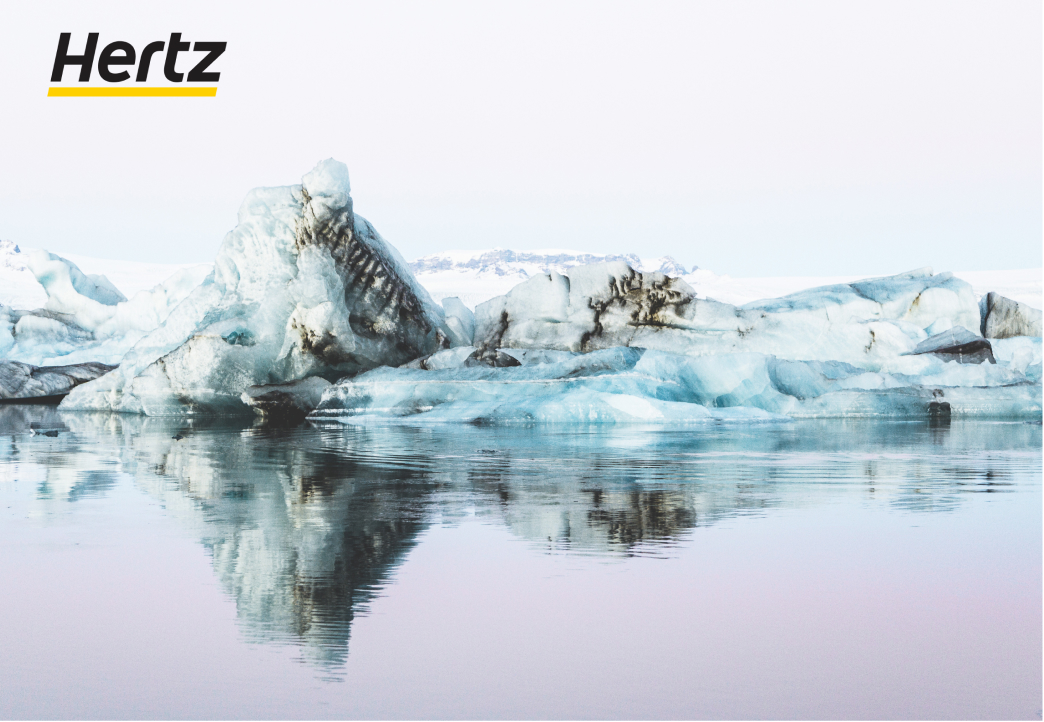
Top 5: Reynisfjara Black Sand Beach – South Coast
Reynisfjara Black Sand Beach is located on Iceland’s South Coast, near the village of Vík í Mýrdal, and it’s a popular stop along the Ring Road. Reynisfjara is one of the easiest natural wonders in Iceland to access year-round, with an accessibility difficulty of only 3 out of 10.
During the summer months, a two-wheel drive car is sufficient as you’ll be traveling on paved roads. During winter, the road conditions can worsen, so a four-wheel drive vehicle is recommended for safer travel. Reynisfjara is roughly 180 kilometers (111 miles) southeast of Reykjavík.
The beach is famous for its dramatic black volcanic sand, formed by centuries of volcanic eruptions. It’s a very different experience from the white sand beaches that most people are used to. The Atlantic Ocean waves crashing onto the shore are very powerful and mesmerizing to watch.
However, always stay a safe distance from the water’s edge and heed all warning signs. Just off the coast, you’ll find Reynisdrangar, a cluster of dramatic basalt sea stacks that rise out of the ocean. Reynisfjara is a great spot for birdwatching. Look out for puffins, fulmars, and other seabirds soaring along the cliffs.
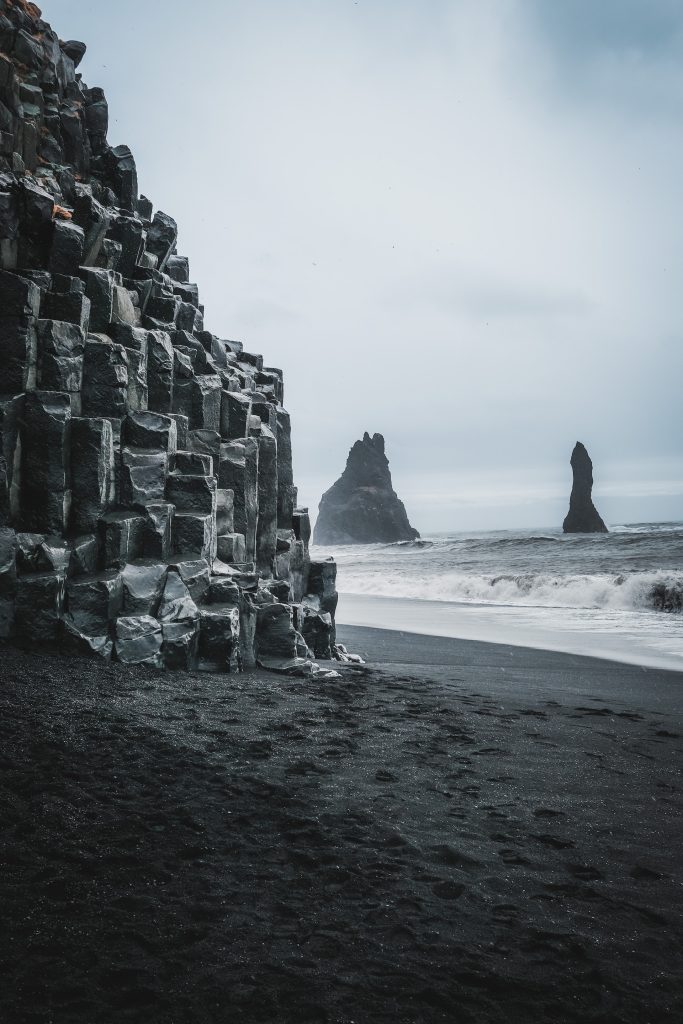
Top 4:Skaftafell Area + Skaftafellsjokull Glacier – South Coast
Skaftafell Nature Reserve is located in Vatnajökull National Park in Southeast Iceland. Skaftafellsjökull glacier is an outlet glacier of Vatnajökull glacier, extending from the vast ice cap towards the Skaftafell area.
Skaftafell offers stunning scenery year-round, but the ideal time for your visit depends on your interests. Summer offers the most pleasant weather for hiking with longer daylight hours. Waterfalls are at their fullest, and wildflowers add vibrant colors to the landscape. However, in winter, visitors can witness snow-capped glaciers, but keep in mind some hiking trails may be closed due to snow or bad weather.
Skaftafell is roughly 310 kilometers (192 miles) southeast of Reykjavík along Route 1, giving it an accessibility difficulty of only 3 out of 10. A 2WD vehicle will suffice in the summer since all roads are paved, but a 4X4 is recommended during the winter and off-season.
Skaftafell has a network of well-maintained hiking trails leading to waterfalls, glaciers, and viewpoints with panoramic views. Popular hikes include the Svartifoss waterfall and Skaftafell Glacier viewpoint. Additionally, the area is rich in wildlife, with opportunities to spot reindeer, Arctic foxes, and a variety of bird species. Skaftafellsjökull glacier is also a popular spot for glacier hiking and ice climbing tours.
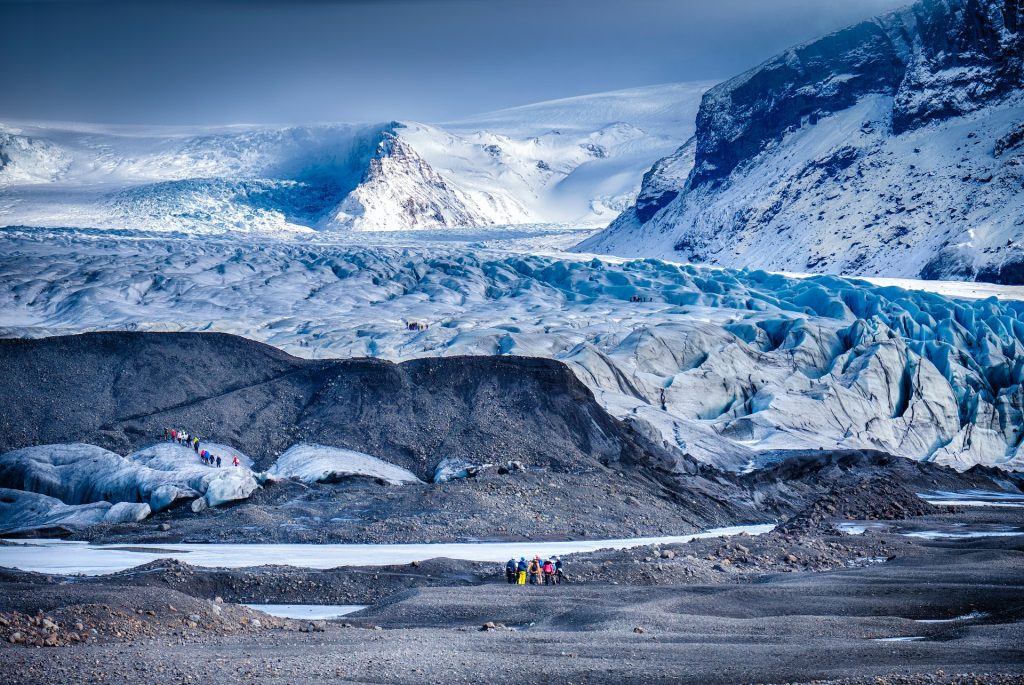
Top 3:Skógafoss + Seljalandsfoss Waterfall – in South Coast
Skógafoss and Seljalandsfoss are both situated along the South Coast of Iceland, a popular tourist route. Skógafoss is slightly further east, with Seljalandsfoss just a short distance further down the road. They are both easily accessible from the Ring Road, with an accessibility difficulty score of just 2 out of 10.
The beauty of these waterfalls can be appreciated year-round. Accessing both waterfalls is possible by 2WD in summer and 4WD in winter. The milder weather of summer allows you to walk more comfortably behind Seljalandsfoss, while the partially frozen waterfalls in the winter are also a beautiful sight.
Skógafoss is a powerful waterfall cascading down a 60-meter (200-foot) cliff, and Seljalandsfoss is about the same height, but it also has a path leading behind it. Well-maintained walking paths lead to the base of both waterfalls.
A staircase allows you to climb to the top of Skógafoss for panoramic views. Additionally, the surrounding areas provide opportunities for hiking, birdwatching, and exploring nearby attractions such as the Skógar Museum and the Eyjafjallajökull volcano.
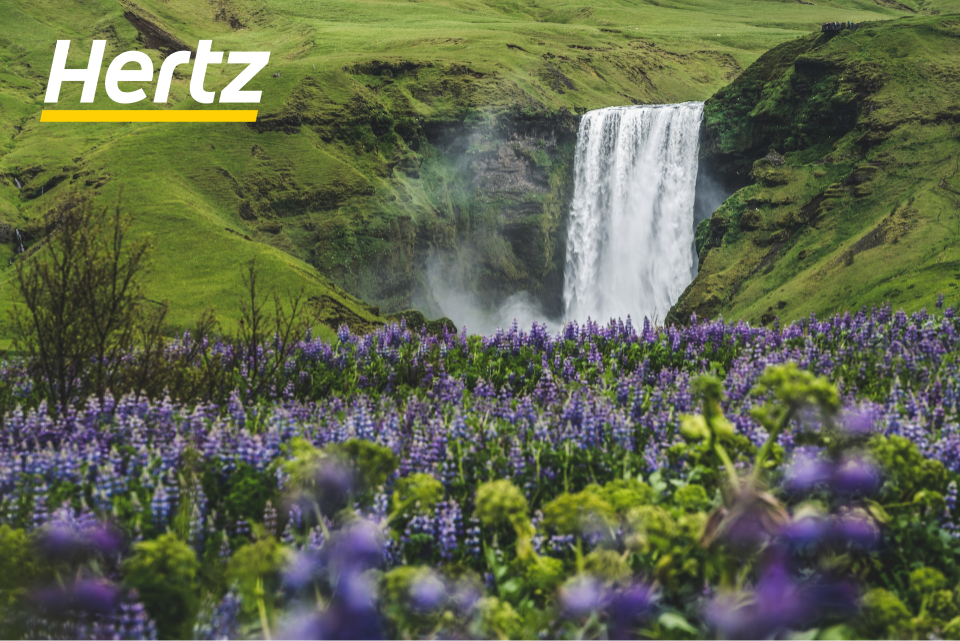
Top 2: The Golden Circle
The Golden Circle is a roughly 300-kilometer (186-mile) loop located in southwest Iceland. It starts and finishes in Reykjavík, the capital city, making it a convenient day trip option. The route circles through unesco world heritage site Thingvellir National Park, Gullfoss waterfall, and the Geysir geothermal area.
The Golden Circle can be visited year-round, with an accessibility difficulty score of just 2 out of 10. Enjoy mild weather and longer daylight hours for exploring the route in the summer, but expect crowds since it’s the height of the tourist season. The geothermal areas with steam rising from the ground can be particularly dramatic in winter.
However, some paths might be icy and slippery. Be prepared for shorter daylight hours and colder temperatures. Accessing the Golden Circle is possible by 2WD in summer and 4WD in winter.
This route is worth visiting for its abundance of natural and cultural attractions. The highlights include the mighty Gullfoss waterfall, where visitors can witness the powerful cascades of the Hvítá River plunging into a deep gorge. Another highlight is the Geysir geothermal area, home to the famous Strokkur geyser, which erupts regularly, shooting hot water high into the air.
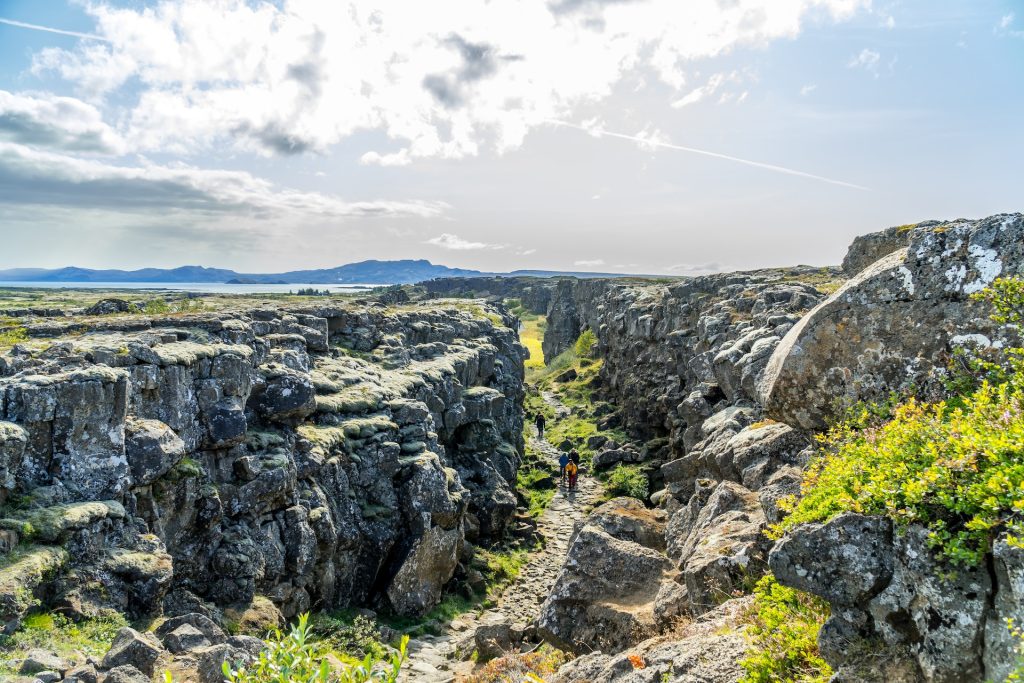
Top 1: Reykjavik – The Capital of Iceland
Reykjavík is Iceland’s capital and largest city. It’s located on the southwestern coast of the country, on Faxaflói Bay. This positioning offers beautiful views of the ocean and nearby mountains.
Reykjavík is a versatile city that can be enjoyed year-round, and each season offers its own unique charm and activities. Accessing Reykjavik is easy, as both 2WD and 4WD vehicles work well for getting around the city and its surroundings, making the accessibility difficulty only 1 out of 10.
Reykjavik is worth visiting for its vibrant cultural scene, fascinating history, and proximity to natural wonders. The city offers a mix of modern architecture, including the iconic Hallgrímskirkja church and charming, colorful houses lining its streets. Visitors can explore museums, galleries, and shops or relax in the city’s Sky Lagoon or nearby Blue Lagoon. Reykjavik also serves as a convenient base for exploring nearby attractions such as the Golden Circle and the Reykjanes Peninsula.
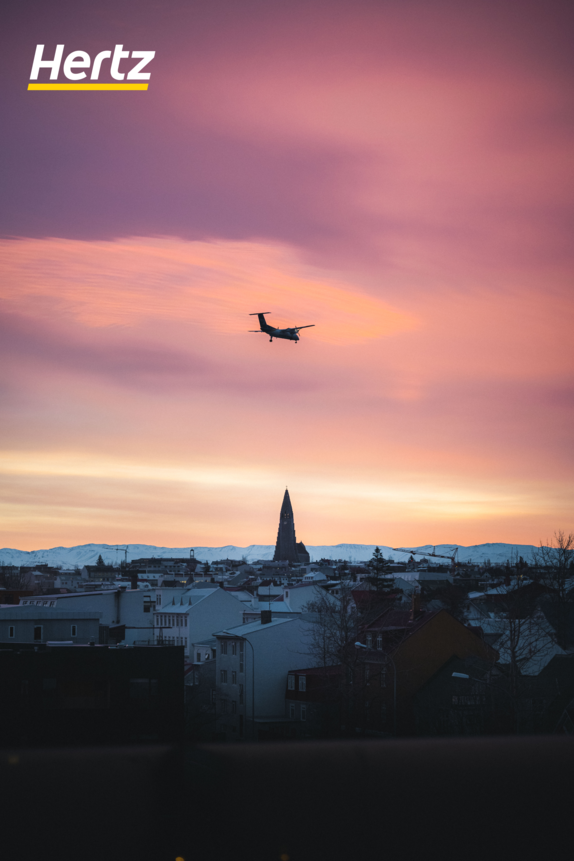
Don’t Miss These Top 13 Iceland Attractions
These 13 top Iceland attractions are must-see stops for your Iceland itinerary. Whether you’re traversing the highlands to Landmannalaugar or exploring the scenic South Coast, you’ll need a reliable vehicle that is equipped to tackle the terrain.
Hertz Iceland provides the freedom and flexibility to create your own unforgettable Iceland adventure. Book your rental car online and in advance with Hertz Iceland and start planning your visit to these incredible Iceland attractions.

